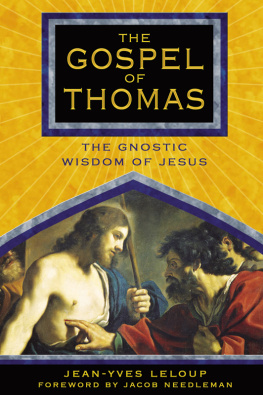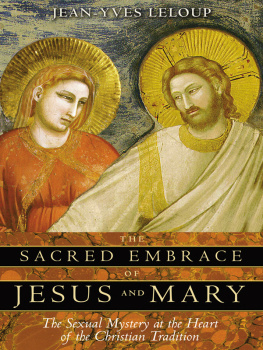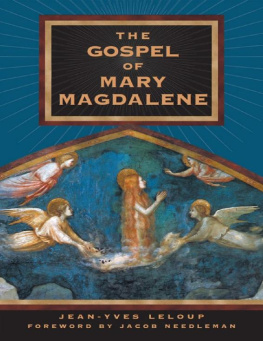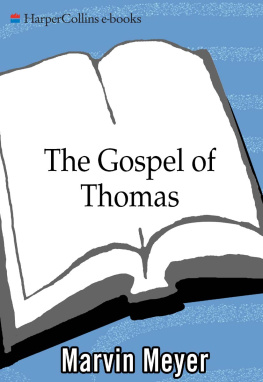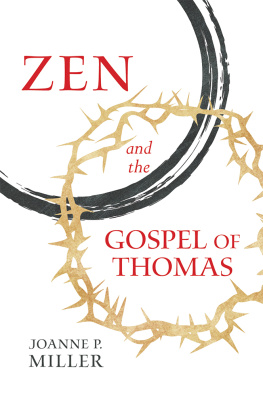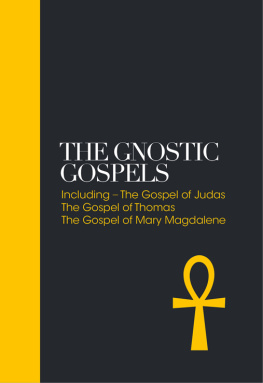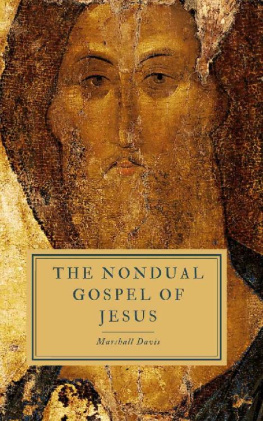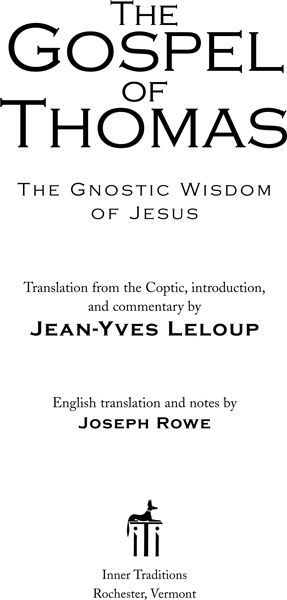
CONTENTS



ABBREVIATIONS

I Cor, II Cor | First Corinthians, Second Corinthians |
I John | First Letter of John |
I Peter | First Letter of Peter |
I Thess, II Thess | First Thessalonians, Second Thessalonians |
I Tim | First Timothy |
Col | Colossians |
Dan | Daniel |
Deut | Deuteronomy |
Eccus | Ecclesiasticus/Sirach |
Eph | Ephesians |
Ex | Exodus |
Ezek | Ezekiel |
Gal | Galatians |
Gen | Genesis |
Heb | Hebrews |
James | Epistle of James |
Jer | Jeremiah |
John | The Gospel of John |
Lev | Leviticus |
Luke | The Gospel of Luke |
Mark | The Gospel of Mark |
Matt | The Gospel of Matthew |
Num | Numbers |
Phil | Philippians |
Prov | Proverbs |
Rev | Revelation |
Rom | Romans |
Zach | Zachariah |
FOREWORD

Among all the astonishing documents accidentallyor fatefullyunearthed in 1945 near the desert village of Nag Hammadi in Upper Egypt, the Gospel of Thomas has made the greatest impact on our understanding of Christianity. The first English rendering of this text was published in 1959 and was greeted with intense interest by scholars and theologians alike. But the impact of this document was soon felt far beyond the circles of specialists, almost as though an audible recording of the voice of Jesus had been discovered. That is to say that even across the reaches of millennial time and even through the curtain of translation from languages known to but a few, for many of us the words in this text have the power to touch an unknown part of ourselves that brings with it an undeniable recognition of truth and hope. When it was said of Jesus, by those who were at first bewildered by him, that he spoke as one having authority, what is surely meant is that he and his teaching authenticated itself by their power to awaken that same hidden, self-authenticating part of the human heart and mind.
Here we have the key to approaching the fundamental category that scholars and theologians have applied to this document and those like itthe technical term gnosticism. It is a word that in fact points to something of great importance to our understanding of all the spiritual traditions of the world and, as such, of great importance to our understanding of human life itself.
When scholars apply the label gnostic to the documents found at Nag Hammadi, they are generally assigning them to the current of religious doctrines and practices that flourished in the early centuries of the Christian era and were condemned as heresy in a movement spearheaded in the second century by the redoubtable bishop of Lyons, Irenaeus. The eventual result of this condemnation was the widespread suppression of these heresies and the relentless destruction of their constitutive texts. Until now, most of what was known of these teachings was based on the adversarial accounts of them provided in Irenaeuss vastly influential work, Against the Heresies. The immense historical significance of the Nag Hammadi documents consists in the likelihood that they were buried by members of some of these communities in order to preserve them from the storm of the ecclesiastical book burning of the time. Thus, nearly two thousand years after the suppression of these so-called heresies, we now suddenly have the opportunity to look directly at aspects of their teachings instead of seeing them largely through the eyes of their enemies.
But although the texts themselves can now be directly seen for the first time in nearly two thousand years, really to see them is a task that invites us to something much more demanding and joyous than simply reading them off the pages of ancient scrolls or modern translations and interpreting them according to familiar habits of intellectual analysis.
It is not for nothing that in this document the very first words of Jesus, here called by the Aramaic name Yeshua, are these: Whoever lives the interpretation of these words will no longer taste death. Is this merely a figure of speech? Or do these words speak to some kind of knowledge and knowing that have an action upon the very flesh and blood of a human being, an action that is incomparably more penetrating than anything we call knowledge or knowingincluding even our inspired moments of intellectual insight or passionate realization? Is there some kind of knowing that can transform our being to the pointdare we imagineof bringing forth a life that does not die when the body dies? Such knowing as this is inseparable from the action of faithconsidered not simply as a set of emotionally charged beliefs, but as a movement within the human psyche that generates a magnetic current flowing between our individual human life and the source of human life itself; and that deposits into our human life the spiritualized matter of what is called the new Adam; and that enables a man or woman actually to answer in an entirely new way the great cry of St. Paul: For the good that I would, that I do not; and that which I hate, that do I, or, in other words, to answer with the actions of love rather than with brittle promises of future virtue. Such transformational knowing actually has little or nothing to do with what we ordinarily call thought. It has to do with energy, the energy of consciousness. This energy is at the heart of what is signified by the ancient word gnosis, from which gnosticism is derived.
In applying the term gnosticism to these teachings, scholars and theologians understandably call our attention to the emphasis that most of the Nag Hammadi documents place on the role of knowledge in the religious lifein apparent contrast to the demand for faith that became the central tenet of the Church over the centuries, especially in the West. There are numerous other doctrines that are sometimes identified with gnosticismsuch as its apparent metaphysical dualism and condemnation of the world. But it is the notion of gnosis as transformational knowing that is of utmost importance and that cries out for deeper inquiry in the world we now live in, a worlda civilizationwhich is deeply, perhaps fatally, afflicted with an ever-widening disconnect between what we know with the mind and what we know in our heart and in our instincts.
Next page
